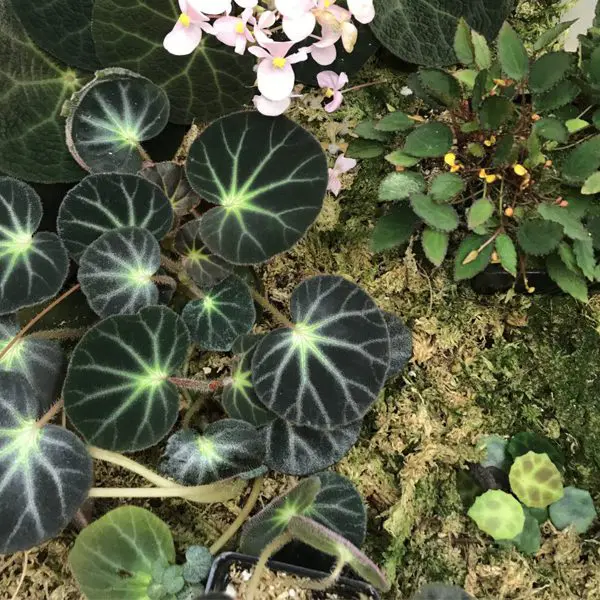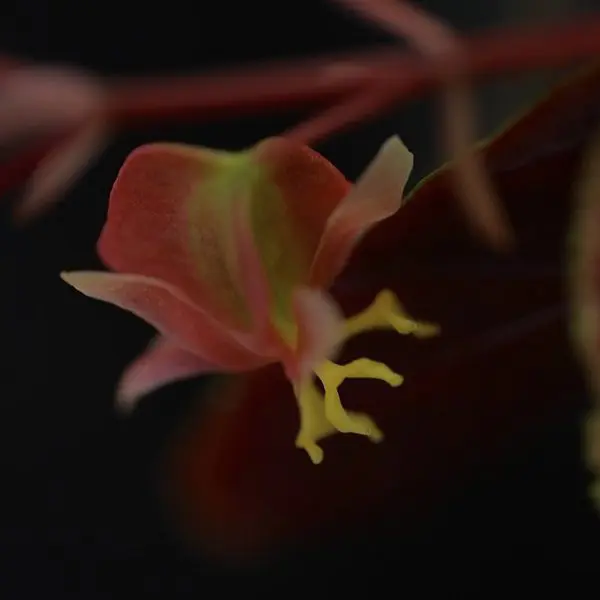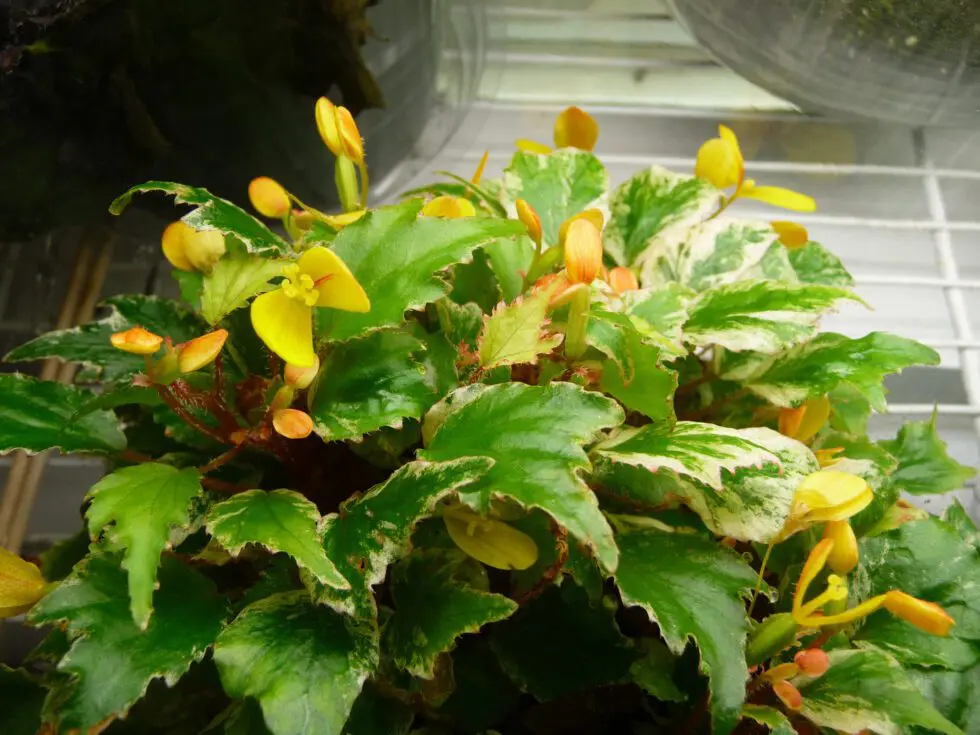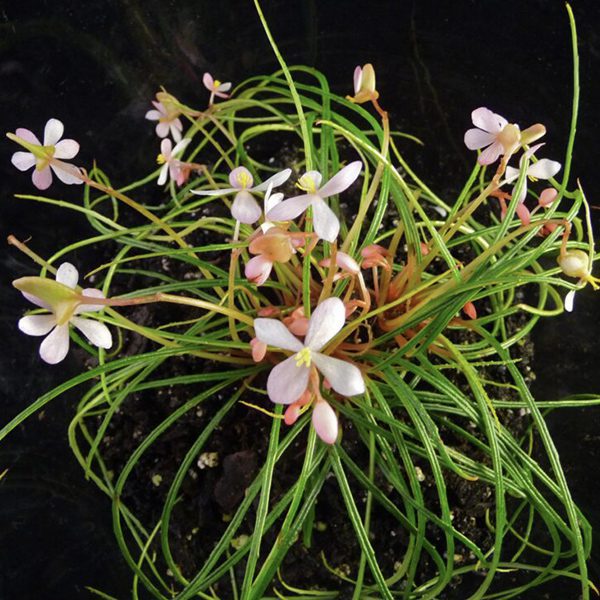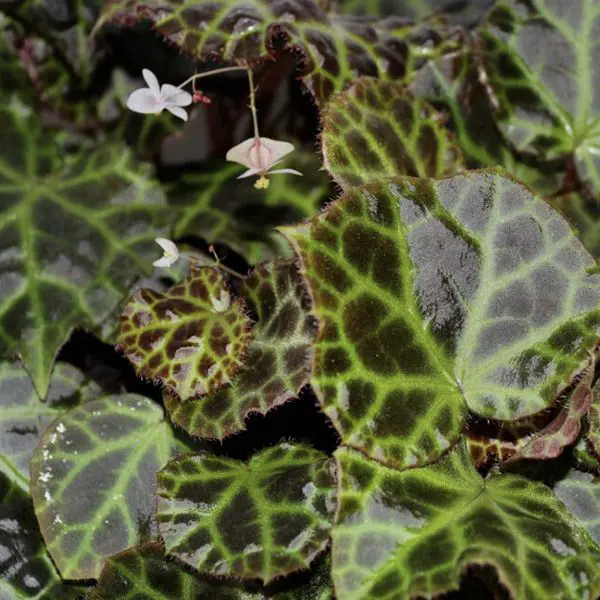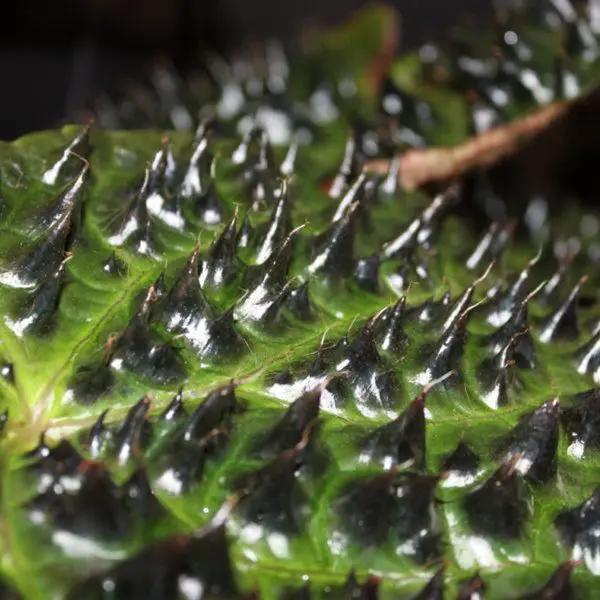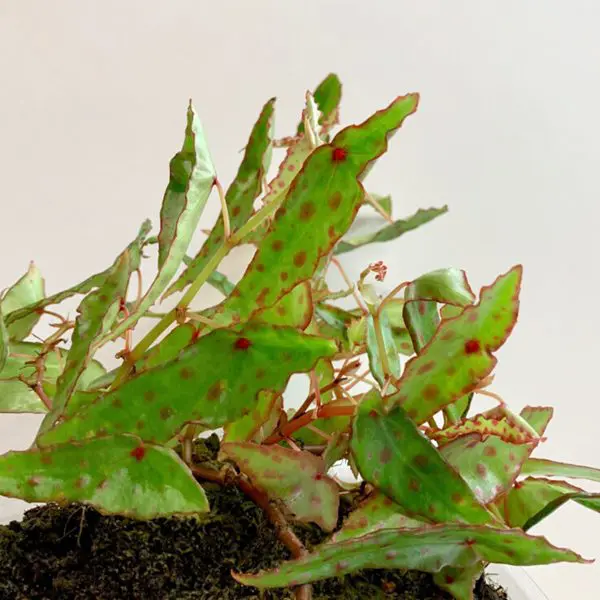The Begonia genus is one of the largest in the plant kingdom. It is estimated to consist of over 2,000 species. Begonia species grow in the tropics and subtropics at a range of altitudes, and in a variety of habitats. It is estimated that the number of undescribed species from Borneo alone, may well be over 400.
Begonia species are studied, described, and named by researchers who present their work in academic publications. These publications also report on the species’ habitats and conservation status related to its habitat; in this way, any needs to preserve the habitat are made clear. New plants are being discovered every day.
Leaf Characteristics of Begonia Species
Leaves of Begonia species have a wide and stunning range of characteristics. Some leaves have speckles, spots, and a variety of other patterns. Some have leaves that are smooth, round, oblong, or fuzzy. These characteristics evolved to play a part in their survival in the niche habitats in which they live.
An example of a species with striking leaf characteristics is B. bogneri, with leaves that look much like grass blades. B. rajah has undulated leaf surfaces that look almost like bubble wrap. B. ferox has black spikes rising from each bubble on its leaf surface. Leaves of B. darthvaderiana are dark, almost black, with a thin border of white.
There are miniatures that spread along the soil surface, such as B. segregata and, B. prismatocarpa. Others have leaves the size of dinner plates, such as B. nelumbiifolia. Still others have leaves that appear crinkled, including B. crispula, B. paulensis, and B. gehrtii.
What Makes a Begonia Species Rare?
Begonias in the wild have adapted to niche environments, evolved into distinctive species, and live in relative isolation until change in the environment leads to another adaptive shift. This adaptive evolution means there are many different species of Begonia, but often not very many plants in any given location – just many small distinct populations. This makes them vulnerable when the environment around them changes or is disturbed.
Species grow true from seed, unlike hybrid and cultivar begonias that require vegetative propagation. Many Begonia species, however, may have a limited way to disperse their minute seeds far and wide, keeping them in small or limited habitats.
We must make every effort to protect species, including growing them in cultivation as well.
Resources to Lists of Begonia Species and to Learn More about them
The Catalog of Life (COL), compiles a comprehensive list of begonias. COL is an authoritative list of the world’s species, maintained by hundreds of global taxonomists. Here you will see a list of Begonia species names. A click will take you to a new page for more information, including its natural habitat and publication information.
Another useful resource is the Global Biodiversity Information Facility (GBIF: The Global Biodiversity Information Facility (2021) What is GBIF? Available from https://www.gbif.org/what-is-gbif [25 March 2021]) maintains a database of Begonia species recently observed in the wild. The database includes human observations of a species, a map of general location where it was seen, and photographs of the species
Growing Begonia Species
Many Begonia species have few special needs, and can be grown much as your other houseplants are.
Other Begonia species are easy to grow once you learn a little bit about what they need and recreate those conditions at home. For example, higher humidity can be provided by making a terrarium out of two clear plastic salad bowls or even a fish bowl. For adequate light, you can create a constant, even light, by using your own light source with LED bulbs. When growing in small terrariums, you can move these distinctive begonias to places of your home where you can enjoy seeing them every day and watching them grow.
Learn how to make your own terrarium here.
The joy of watching these unusual plants thrive is immeasurable, and before long, you can begin to take cuttings, or perhaps try to collect seed, and then share and help conserve and protect these plants for many years.
Conserving Species
ABS is committed to funding research and conservation efforts worldwide that preserve and protect Begonia species natural habitats. Read more about Begonia Species and their Conservation.
The Save Our Species (SOS) Program of the ABS was created in 2010 to encourage its members to adopt species, keep them growing in cultivation, and to share them with others so that we do not lose these species. Read about the SOS – Save Our Species Program and consider joining!
The ABS Seeds for Conservation program focuses specifically on endangered species with the hope of producing seeds that can be shared with seed banks and others to preserve these endangered species. Read about the Seeds for Conservation Program.
Enjoy this introduction to a sampling of Begonia species
Begonia grandis – This Begonia was popularly grown in Southeast and South Central China, as far back as the 1400’s. It is considered hardy, as it can survive through US Growth Zone 6 snowy winters with a little mulch for protection. This Begonia was also used for medicinal purposes because of its astringent properties and is still used for healing wounds. It makes a great garden plant as it is about 24 to 36 inches tall and has pinkish white blooms.
Begonia bogneri was discovered in 1969, by Josef Bogner, of Germany. It was found growing in deep shade on steep, mossy, granite cliffs at 165 ft elevation, on a small island, Presque’Ile de Masoala, to the northeast of the island of Madagascar, where annual rainfall is about 140 inches. All species of begonias and many other plants from Madagascar are considered vulnerable today.
This species was shared with ABS member Rudolf Ziesenhenne, who grew and shared it, naming it B. bogneri to honor its discoverer. The description of the plant was first made in The Begonian in 1973.
This plant thrives in a terrarium, and will need little more than watering once a month or two, so long as the terrarium is air tight to maintain humidity. It eventually grows a potato-like tuber under the soil at its base, and from its eyes, iit will put out tiny leaflets that turn into plantlets over time. Once the plant is happy, it will bloom year ‘round. It is a most uncommon, yet very easy-to-grow plant.
This plant thrives in humidity, so a terrarium is best for it. It will change to a lighter color if it gets too much light, but its normally dark and shiny coloration along with the undulated surface of its leaves, makes it a gorgeous plant- with or without its flowers. Very easy to grow.
This species has a creeping stout rhizome. When the plant is young, its leaves rarely or never have bullates. As a mature plant, the leaves are densely covered with blackish-brown and hair-tipped bullae. This plant grows best in a terrarium to maintain the humidity levels it needs.
Begonia amphioxus was found in 1984 growing on and around the small limestone hill of Batu Punggul, far inland in Sabah, while the researchers Martin Sands, A. Lamb, and A. Bacon, were exploring a craggy outcrop and the surrounding forest. The plants were growing on steep banks between boulders around a limestone hill and in rock crevices, in complete or partial shade.
The original citation was published by Sands in May 1990. He wrote that this species was named amphioxus to describe the leaf shape which is sharp at both ends. The specific epithet, amphioxus, is derived from the Greek amphi which means in two ways and oxys which means sharp.
This plant is very unusual, not just for its leaf shape, but for the bright red outlines surrounding the leaf edges and the bright red dots found all over the plant. It likes high humidity and needs a terrarium to grow, and once happy, it can reach a height of up to 24 to 30 inches, and will produce tiny white flowers to top off this already spectacular looking plant.

